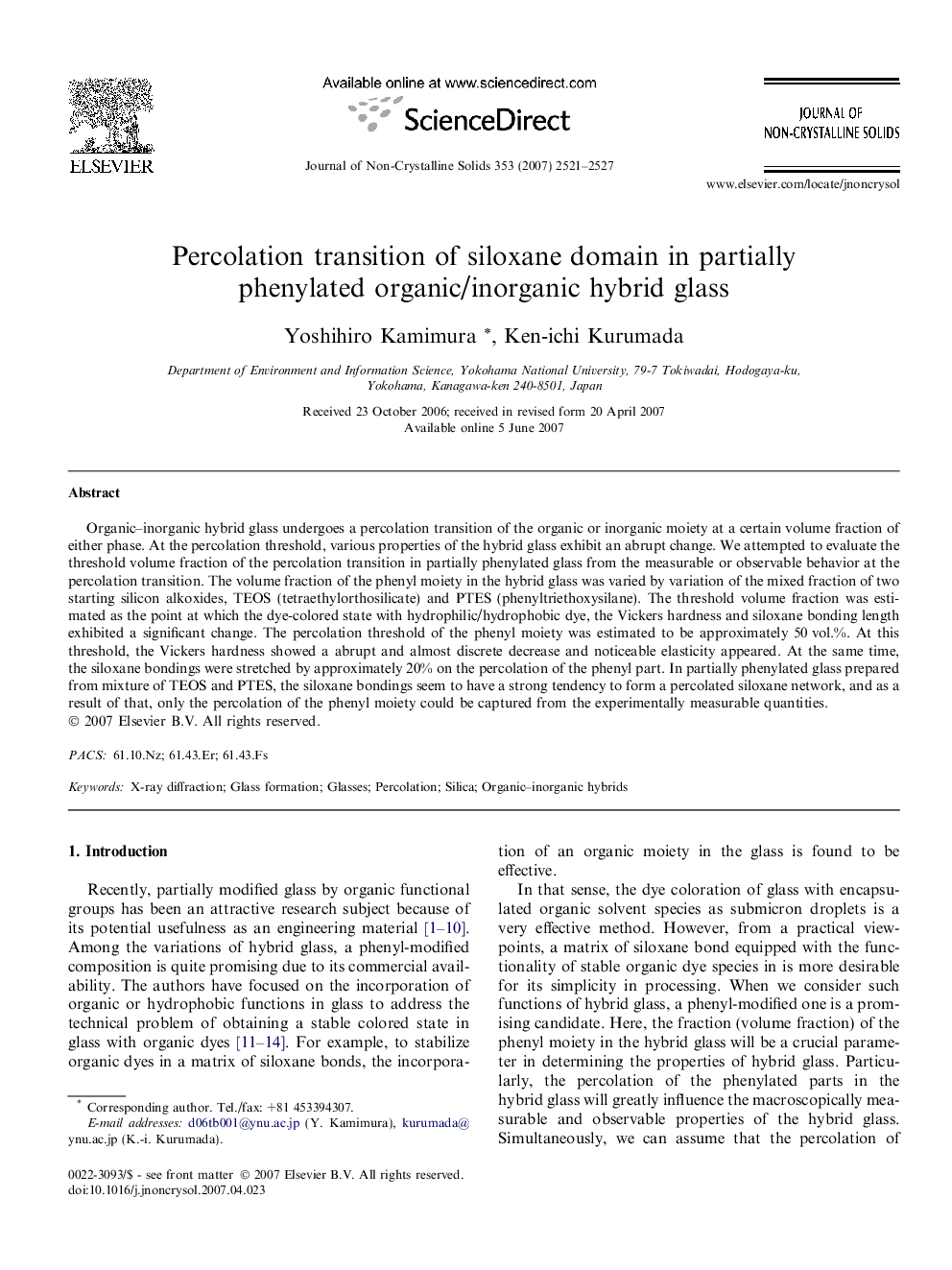| Article ID | Journal | Published Year | Pages | File Type |
|---|---|---|---|---|
| 1483470 | Journal of Non-Crystalline Solids | 2007 | 7 Pages |
Abstract
Organic-inorganic hybrid glass undergoes a percolation transition of the organic or inorganic moiety at a certain volume fraction of either phase. At the percolation threshold, various properties of the hybrid glass exhibit an abrupt change. We attempted to evaluate the threshold volume fraction of the percolation transition in partially phenylated glass from the measurable or observable behavior at the percolation transition. The volume fraction of the phenyl moiety in the hybrid glass was varied by variation of the mixed fraction of two starting silicon alkoxides, TEOS (tetraethylorthosilicate) and PTES (phenyltriethoxysilane). The threshold volume fraction was estimated as the point at which the dye-colored state with hydrophilic/hydrophobic dye, the Vickers hardness and siloxane bonding length exhibited a significant change. The percolation threshold of the phenyl moiety was estimated to be approximately 50Â vol.%. At this threshold, the Vickers hardness showed a abrupt and almost discrete decrease and noticeable elasticity appeared. At the same time, the siloxane bondings were stretched by approximately 20% on the percolation of the phenyl part. In partially phenylated glass prepared from mixture of TEOS and PTES, the siloxane bondings seem to have a strong tendency to form a percolated siloxane network, and as a result of that, only the percolation of the phenyl moiety could be captured from the experimentally measurable quantities.
Keywords
Related Topics
Physical Sciences and Engineering
Materials Science
Ceramics and Composites
Authors
Yoshihiro Kamimura, Ken-ichi Kurumada,
